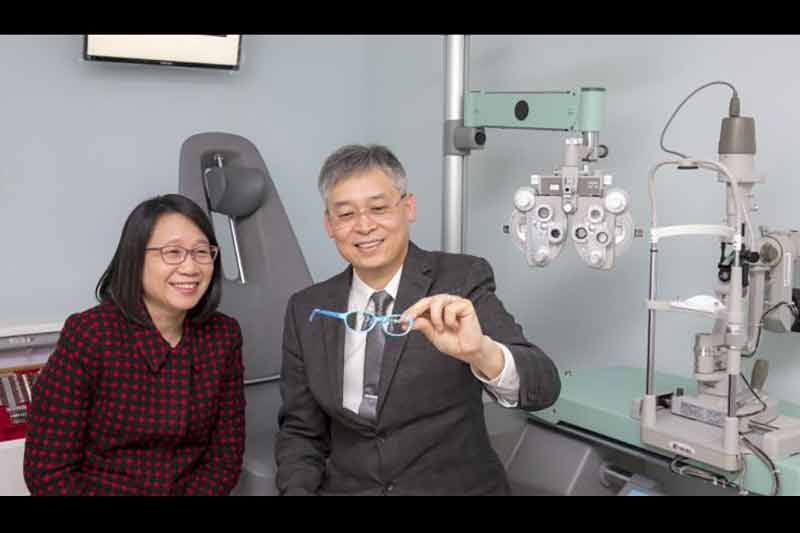
The Hong Kong Polytechnic University (PolyU) has won 9 prizes at the 46th International Exhibition of Inventions of Geneva. Held from 11 to 15 April, the Exhibition has attracted 823 exhibitors from 40 countries/regions, showcasing around 1,000 new products. Under the patronage of the Swiss Federal Government, the State and the City of Geneva as well as the World Intellectual Property Organization, it is the biggest event of its kind globally.
According to the press release by PolyU, these breakthroughs not only expand the boundaries of knowledge, but also enhance the well-being of our society on different fronts as they cover a wide range of application areas.
“PolyU is committed to making the world a better place through research, innovation and knowledge transfer,” remarked Dr Miranda Lou, Executive Vice President of PolyU.
“These awards manifest the fruition of the tireless efforts of our research experts. We take great pride in their contribution in technological advancement, which doubtlessly deserves international recognition,” she added.
Among these breakthroughs, the Defocus Incorporated Multiple Segments (DIMS) Spectacle Lens for Myopia Control was awarded the Grand Prize, Grand Award and Gold Medal with the Congratulations of Jury. The Grand Prize is considered the top honour of the event.
According to the press release by the International Exhibition of Inventions of Geneva, the multi-segment spectacle lens for myopia control were developed by Professor Carly Sy Lam and Professor Chi Ho To. The lenses comprising several microlens segments that constantly defocus the short-sighted vision of myopia sufferers, enabling them to see clearly. The device has been shown to slow the progression of myopia in children by 60%, and even stopped it altogether in 20% of the subjects tested.
Myopia affects countless people around the world, but in some regions it almost endemic. In several Asian countries, nearly 80% of the population are short-sighted. The glasses developed by Prof Sy Lam and Prof To are composed of hundreds of micro-lenses whose action employs the natural homeostatic mechanism that regulates the size of the eyeball based on the physical characteristics of optical input. The clinical results indicate a spectacular slowing of the disease. Apart from reducing the myopia itself, the DIMS glasses also significantly reduce the overall risk of associated diseases, such as retinal detachment and glaucoma.
Other winning projects from PolyU at the Exhibition are:
(1) Intelligent 3D Stereoscopic Imaging System on Plenoptic Camera
The innovation won Gold Medal with the Congratulations of Jury. Led by Ir Prof Wing Bun Lee from the Department of Industrial and Systems Engineering, the intelligent 3D imaging system with internal reflection unit can capture multiple angles of an object at the same time, generating a high-quality 3D image or video with depth map information after image processing.
(2) Scalable All-Textile Energy Harvesters for Electric Power Generation
The project won Gold Medal with the Congratulations of Jury. Led by Dr Bingang Xu from the Institute of Textiles and Clothing, this novel textile can harvest ambient mechanical energy for electric power generation.
The textile is super-flexible, tailorable, washable and can be fabricated by existing machines .It can be used as wearable power sources for portable and wearable devices, e.g. hearing aid, fitness tracker, wearable sensor, etc.
(3) Automated System for Surface Pitting Analysis on Airplane Jet Engine
The project led by Dr Stephen O’Brien from Aviation Services Research Centre (ASRC) won Gold Medal. Pitting is surface defect found on critical jet engine components of complex shapes and different sizes. It is currently detected by naked-eye inspection. Such task takes up significant man-hours and embodies errors in accuracy and
reliability.
The newly-developed automated system by PolyU’s ASRC employs robotics, artificial intelligence (AI) and deep learning, image processing, 3D scanning, optical metrology, and non-destructive testing technologies to identify and measure corrosive pitting such that precise information such as pitting position, depth and diameter can be obtained.
This system can be used together with the automated surface defect removal system developed by ASRC. When a surface defect is identified, the removal system may execute artisan level workmanship to repair the defects. This enables automation of jet engine maintenance procedures and significantly shortens the process from the 4-hour manual method to 1.5 hours, enhancing the quality, reliability and accuracy of work; and cuts down operation costs. It can thus substantially reduce the turnover time for aircraft maintenance and airplane turnaround time.
In future, ASRC will apply deep learning defect detection in other areas such as Non-Destructive Testing (NDT) images or fuselage inspection to further realize automation in aircraft maintenance. In the perceptive of Big Data and Industry 4.0, this kind of automation enables information collection and pattern analysis of defects, leading to better engine part design in future.
(4) eNightLog – Night-time Monitoring System for Caring Elderly with Dementia
The project led by Ir Prof Yongping Zheng from Department of Biomedical Engineering won the Gold Medal. Equipped with event sequence tracking, different kinds of remote sensing and imaging technologies, this system performs intelligent night-time monitoring of dementia patients in a non-restraint approach. In case of unusual incident, the system will send an alert message to the caregiver immediately, expediting the incident handling process. PolyU will install over 100 units of eNightlog in local elderly health centres in Hong Kong.
(5) Micro-embossing Equipment for Precision Optical Microstructures
The project led by Dr Lihua Li from the Department of Industrial and Systems Engineering won the Gold Medal. The novel micro-embossing equipment with graphite-like carbon film can produce micron-level micro-structural optical components in glass using self-developed heating technology and innovative mould design. The equipment enables rapid and accurate impression of small aspheric lens and fine optical microstructures such as micro-lens array.
(6) Sprayable Smart Sensing Network Coating for Structural Health Monitoring
This project led by Prof Zhongqing Su, Department of Mechanical Engineering, won the Gold Medal. The new breed of nanocomposites can be sprayed directly onto engineering structures, forming smart sensing network coatings for in-situ structural health monitoring and damage detection purposes. Due to its low fabrication cost, large quantities of sensors can be deployed in a sensor network, paving the way for a new era of structural health monitoring.
On 13 April, the Hong Kong Economic and Trade Office in Berlin (HKETO Berlin), together with the Hong Kong Federation of Invention and Innovation (HKFII), hosted a reception at the 46th International Exhibition of Inventions Geneva to support the exhibitors from Hong Kong.
Representing a city with strong focus on innovation, HKFII brought a delegation of more than 100 people from Hong Kong, and showcased a total of 98 projects in the exhibition. These projects ranged from microbial technology that turns food waste to biodegradable plastic bags to lip password for access control.
Other than PolyU, other exhibition projects from Hong Kong were also awarded with a total of 25 gold medals with the congratulations of the jury, 47 gold medals and 26 silver medals.
“Hong Kong has strong research and development capabilities and talent, excellent technological infrastructure, world-class universities and academics, a sound legal system and a robust intellectual property protection regime,” highlighted by the Director of the HKETO Berlin, Ms Betty Ho, at the reception.
Given Hong Kong’s favourable location in the heart of the Guangdong-Hong Kong-Macao Bay Area, Ms Ho added that the city would continue to step up collaboration in innovation and technology with the talent pools from other economies and capture the unprecedented opportunities together.
















